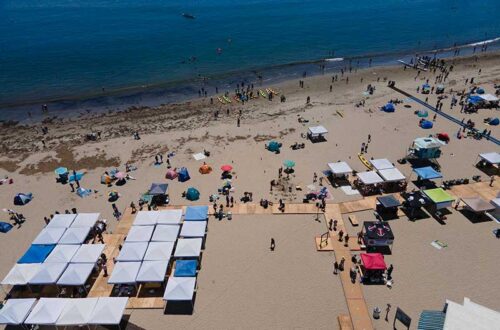
Create a Cozy Corner to Increase Peace in Your Home
What is a Cool Down Zone?
Everyone needs to take a break sometimes. Creating a cool down zone in your home can be a simple and effective way to normalize big feelings and encourage emotional regulation. This space can be very small and simple; it doesn’t need to be extravagant or expensive.
You also do not need to have a big home. A cool down zone can be a small corner of a room with some favorite pillows, stuffed animals and books that you already have. The idea is that there’s a spot in your home that is intentionally set up as a place that anyone can go to when they are feeling stressed, frustrated, sad, or when they just need to take a break.
Some Dos and Don’ts
DO- set up your cool down zone with your kid(s), not for your kid(s). When children are involved in creating a new space, they are much more likely to feel excited about it. Their buy-in is critical for this space to be used effectively. Decorate the wall with some pictures or stickers that they like, have them help pick out what pillows and stuffies will go there, and ask them if they have any ideas about anything else they’d like to include
DO- Ask open-ended questions like: “What helps you feel better when you’re feeling sad or frustrated?” You might offer suggestions of what might be helpful for the space, such as soothing music, sensory toys, books, etc., but let the child make most of the decisions so that they feel ownership of the space. Also feel free to come up with a special name for your cool out zone as a family. DO- make the space soft, cozy and calming (not over-stimulating).
DON’T- create a cool down zone when your child is not home and then show it to them and explain it to them once they arrive. This can lead to resistance about the idea, rather that excitement about it.
DON’T- use any screens or digital devices as a part of the cool down zone. It is important for children to learn to self-soothe and self-regulate without relying on a screen.
Time Out?
Sometimes a cool down zone can be misused as a time-out area. It is very important that this cozy area is not used for punishment. It is meant to be a place that anyone in the home can choose to go to when they need to take a break.
Parents can ask their child if they’d like to go to their cool down zone if they notice their child is upset, but the child is free to make that choice or to make another choice. I find it’s usually best not to suggest it in the moment while the child is upset, but rather talk about the cool down zone regularly (during neutral times) so that it becomes an idea that the child can think of on their own the next time they need a break.
Positive Discipline teaches that children do better when they feel better. Time-outs are not recommended because they typically make children feel worse. Research shows that punitive time-out is ineffective because forced separation denies the basic human need for inclusion and belonging.
For over 20 years, the National Association for the Education of Young Children (NAEYC) has recommended replacing punitive time-out as well as all discipline techniques that pose pain and suffering. Cool down zones are a great alternative to traditional time-outs, and the concept of having a cool down zone available as a choice is sometimes referred to as a Positive Time-Out.
The Importance of Modeling
It can be very powerful to model going to the cool down zone in your home when you feel frustrated and to model taking some deep breaths or doing a calming activity.
For me, I found an alternative way to model the habit of taking a break when I felt frustrated. I knew this was an important skill to model for my young kids, but I didn’t feel that going to my home’s cool down zone really helped me.
I talked to my kids about Mommy’s cool down zone being the backyard. I told them that being outside and breathing fresh air can help me when I need a break. Going outside to my own cool down zone not only modeled this important skill for my kids, but it also helped me become a less reactive parent.
When I started to feel my jaw tighten, or feel hot (both are physical signs for me that I’m getting triggered and going into my fight or flight part of my brain), I would go outside, take some deep breaths and wait until I felt more calm.
Your Family’s Cool Down Zone
Send GUISC pictures of your family’s cool down zone and tell us what you call it in your home. What are your family’s favorite calming books, fidgets, or stuffies? Any cool down zone success stories? We’d love to hear from you!
Book Recommendations
- Jared’s Cool-Out Space is a great children’s book to read as a family to learn the process and benefits of Positive Time-Out.
- Positive Discipline for Preschoolers
- Positive Discipline Parenting Tools: the 49 Most Effective Methods to Stop Power Struggles, Build Communication, and Raise Empowered, Capable Kids
Hannah Stubblefield is a certified Positive Discipline Parent Educator. She is a former teacher and current co-owner of Wonderland Toys & Classroom Resources in Aptos. She is wife to Chris, step-mom to Sebastian, boy-mom to Adam, girl-mom to Maya, and dog-mom to Samson. Check out her upcoming in-person parenting classes at the Family Circle Center in Aptos starting April 1, 2024






